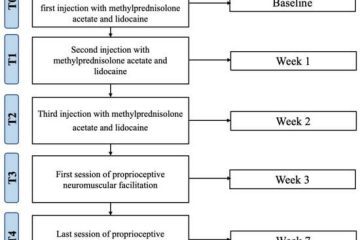In a world where the landscape of healthcare is ever-evolving, investors seek stability and growth in an industry vital to our well-being. Enter the realm of Healthcare ETFs – a doorway to a diversified portfolio rooted in the advancement of medical innovation. Explore with us as we delve into the intersection of finance and healthcare, unraveling the intricacies of Healthcare ETFs and their role in shaping the future of both our wealth and well-being.
Table of Contents
- Exploring the Benefits of Healthcare ETFs for Diversification
- Key Factors to Consider When Investing in Healthcare ETFs
- Top Healthcare ETFs to Watch for Long-Term Growth
- Strategies for Maximizing Returns with Healthcare ETF Investments
- Q&A
- Insights and Conclusions
Exploring the Benefits of Healthcare ETFs for Diversification
Dive into the world of Healthcare ETFs, where opportunities for diversification abound. By investing in these specialized funds, you gain access to a broad range of healthcare companies, spanning pharmaceuticals, biotechnology, medical devices, and more. Diversifying your portfolio in this sector can help mitigate risks associated with individual stocks and industry-specific fluctuations.
Furthermore, Healthcare ETFs offer the potential for significant growth, as the healthcare industry continues to evolve and innovate. With exposure to both established giants and up-and-coming disruptors, these funds capture the essence of the dynamic nature of healthcare investments. Consider exploring Healthcare ETFs as a strategic addition to your investment arsenal, tapping into the resilience and growth potential of the ever-evolving healthcare sector.

Key Factors to Consider When Investing in Healthcare ETFs
Investing in healthcare ETFs can offer a compelling opportunity for investors looking to diversify their portfolio with exposure to the thriving healthcare sector. When considering healthcare ETFs, there are several key factors to keep in mind to make informed decisions.
Market Trends: Keeping an eye on current market trends and industry developments is crucial when evaluating healthcare ETFs. Analyzing factors such as technological advancements, regulatory changes, and global health crises can provide valuable insights into the potential performance of healthcare ETFs.
Top Holdings: Another important factor to consider is the composition of the ETF’s holdings. Examining the top holdings within the healthcare ETF can give investors a clearer picture of where their money is being invested. Understanding the weightage of different stocks and sectors within the ETF can help investors assess the level of risk and potential returns associated with the investment.

Top Healthcare ETFs to Watch for Long-Term Growth
When it comes to investing in the healthcare sector, Exchange-Traded Funds (ETFs) offer a convenient way to diversify and capitalize on the potential growth opportunities in this dynamic industry. By tracking healthcare indexes, these funds provide exposure to a range of healthcare-related stocks, making them a favorable choice for long-term investors seeking growth.
Investors looking to venture into the healthcare ETF space should keep an eye on top performers that have shown resilience and potential for sustained growth. ETFs such as **Vanguard Health Care ETF (VHT)** and **iShares U.S. Healthcare ETF (IYH)** have gained popularity among investors for their strong track records and diverse holdings, offering a blend of stability and growth potential in the ever-evolving healthcare landscape.


Strategies for Maximizing Returns with Healthcare ETF Investments
Investing in healthcare ETFs can be a lucrative venture when approached strategically. One effective approach is to diversify your investments across various healthcare sectors such as pharmaceuticals, biotechnology, medical devices, and healthcare services. By spreading your investments, you can mitigate risk and capitalize on the growth potential of different segments within the healthcare industry.
Another key strategy is to stay informed about the latest healthcare trends and developments. Keeping a close eye on regulatory changes, new drug approvals, breakthrough technologies, and demographic shifts can help you make informed investment decisions. Additionally, monitoring the performance of leading healthcare companies and evaluating their financial health can guide you in selecting the most promising healthcare ETFs for optimal returns.
Q&A
Q: What is a healthcare ETF?
A healthcare ETF, which stands for Exchange-Traded Fund, is a type of investment fund that focuses on companies operating in the healthcare sector. These ETFs offer investors the opportunity to diversify their portfolio by investing in a basket of healthcare-related stocks, providing exposure to various subsectors such as pharmaceuticals, biotechnology, healthcare equipment, and more.
Q: How does a healthcare ETF work?
Healthcare ETFs work by pooling investors’ money to invest in a diversified portfolio of healthcare stocks. The ETF is traded on a stock exchange, allowing investors to buy and sell shares throughout the trading day. By investing in a healthcare ETF, investors can benefit from the overall growth potential of the healthcare sector without having to pick individual stocks.
Q: What are the benefits of investing in a healthcare ETF?
Investing in a healthcare ETF offers several benefits, including diversification, liquidity, cost-effectiveness, and potential for growth. Diversification helps spread risk across multiple healthcare companies, while liquidity provides the flexibility to buy and sell shares easily. Additionally, healthcare ETFs often have lower fees compared to actively managed funds and offer exposure to a sector known for innovation and growth.
Q: What are some factors to consider before investing in a healthcare ETF?
Before investing in a healthcare ETF, it’s essential to consider factors such as the fund’s objectives, holdings, expenses, performance track record, and the overall outlook for the healthcare sector. Investors should also assess their risk tolerance, investment goals, and time horizon to determine if a healthcare ETF aligns with their investment strategy.
Q: What are some popular healthcare ETFs available to investors?
Some popular healthcare ETFs that investors may consider include the Health Care Select Sector SPDR Fund (XLV), iShares U.S. Healthcare ETF (IYH), Vanguard Health Care ETF (VHT), and SPDR S&P Biotech ETF (XBI). These ETFs offer exposure to different segments of the healthcare industry and cater to varying investment objectives.
Q: How can a healthcare ETF fit into an investor’s overall portfolio strategy?
A healthcare ETF can fit into an investor’s overall portfolio strategy by providing exposure to a defensive sector known for its resilience and long-term growth potential. Investors looking to diversify their portfolio, hedge against market volatility, or capitalize on healthcare innovation may find a healthcare ETF to be a valuable addition to their investment mix.
Insights and Conclusions
In conclusion, investing in a healthcare ETF can be a promising way to diversify your portfolio and tap into the potential growth of the healthcare sector. By incorporating healthcare ETFs into your investment strategy, you can benefit from the stability of established healthcare companies while also gaining exposure to the innovation and growth potential within the industry. Whether you are a seasoned investor or just starting out, exploring healthcare ETF options could offer a compelling opportunity to align your investment goals with the advancements in the healthcare field. Keep monitoring market trends, stay informed, and consider consulting with a financial advisor to make well-informed decisions that suit your financial objectives. Here’s to your financial health and prosperity.




0 Comments